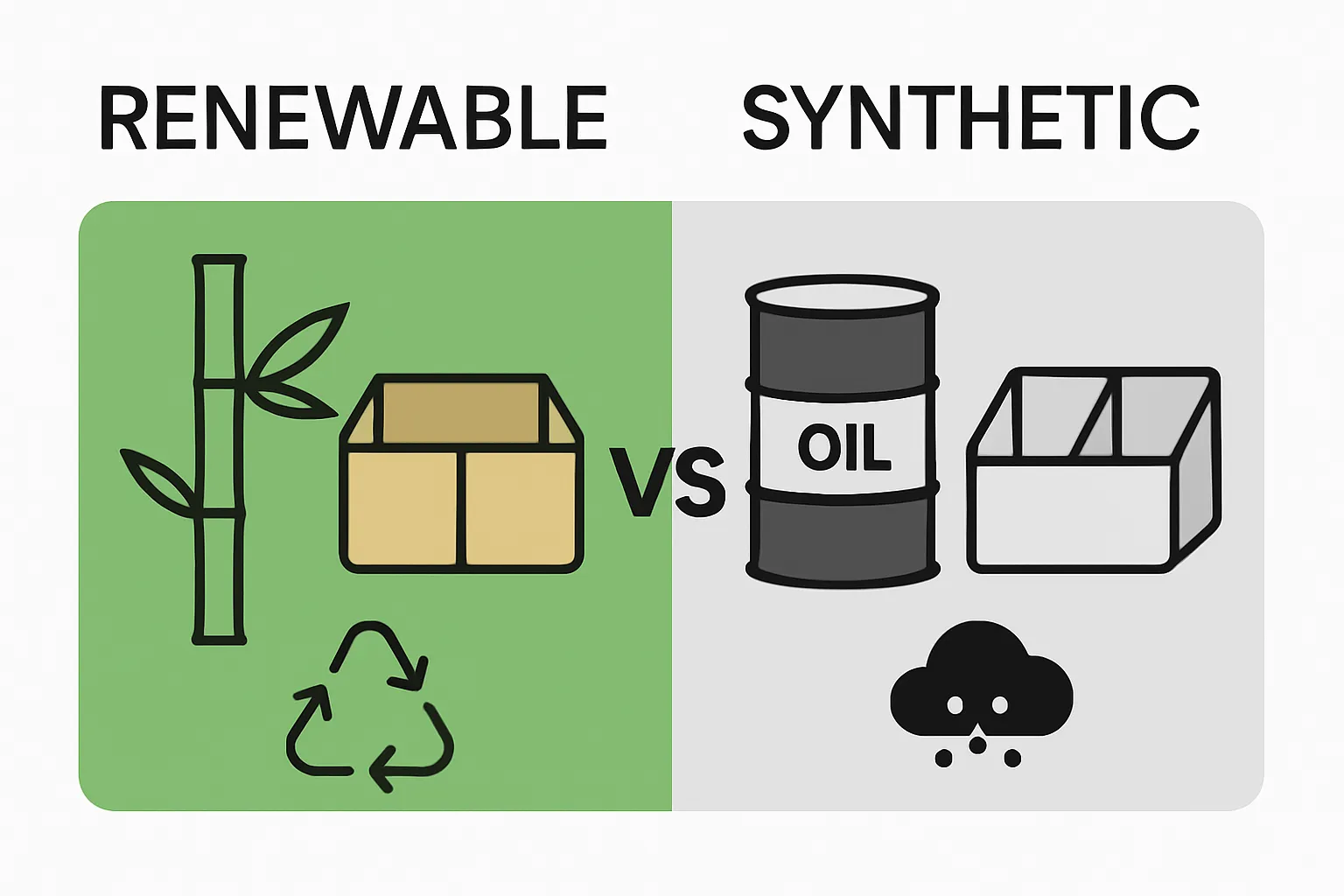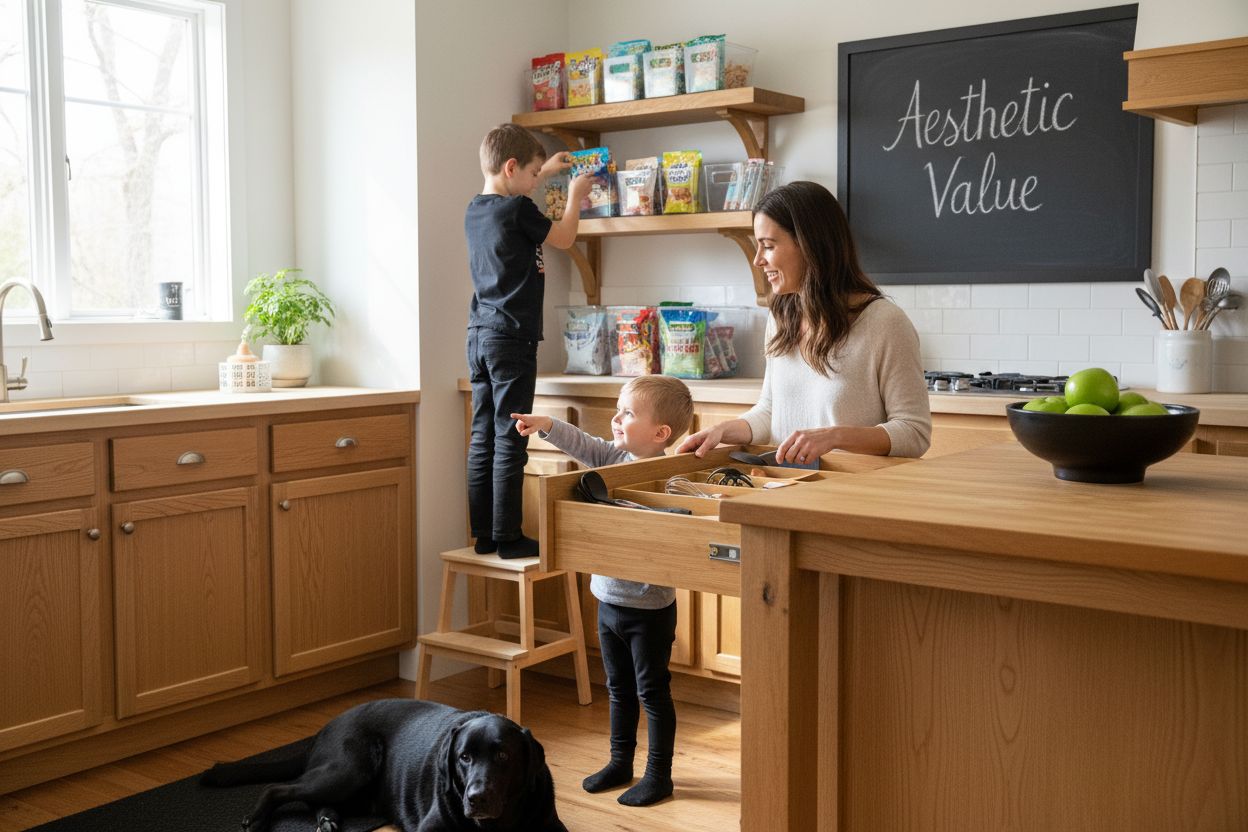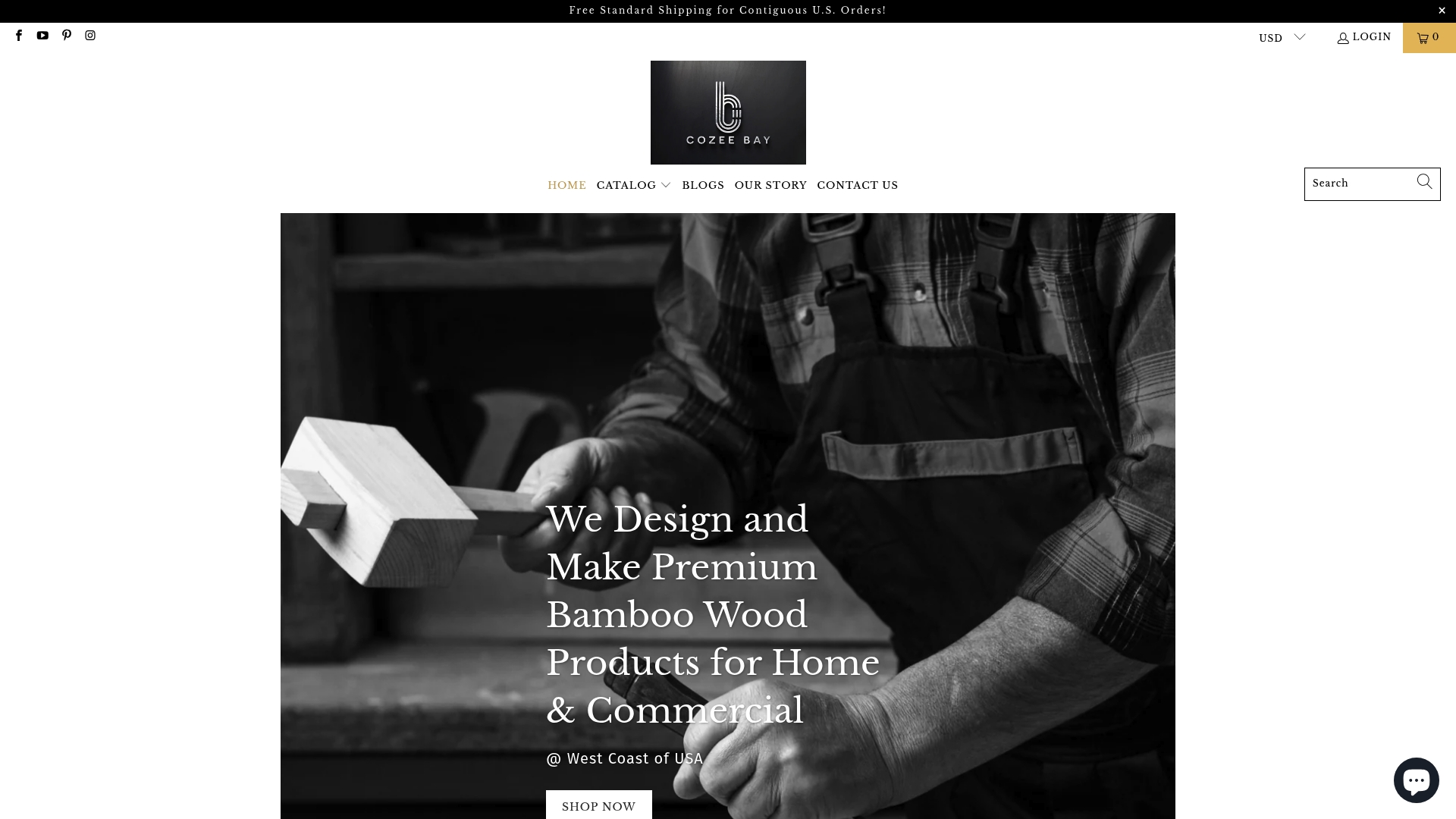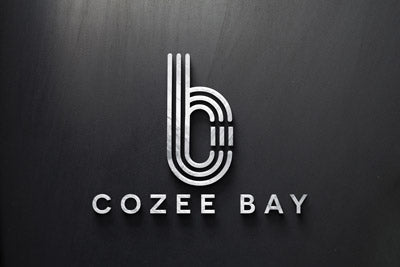Your Cart is Empty
Free Standard Shipping for Contiguous U.S. Orders!
Free Standard Shipping for Contiguous U.S. Orders!
Catalog

Understanding Bamboo vs Plastic Organizers: A Comprehensive Guide
October 06, 2025 8 min read
Bamboo and plastic organizers might look similar sitting on a store shelf, but they tell very different stories about what you bring into your home or office. You might expect plastic to win on convenience, speed, and cost, but its environmental footprint is far heavier than most people realize. Bamboo can grow up to 3 feet per day, making it one of the fastest and most renewable resources on the planet, while plastic sticks around for centuries in landfills. That flips the script on what being ‘practical’ really means.
Table of Contents
- What Are Bamboo And Plastic Organizers?
- The Environmental Impact Of Bamboo Vs Plastic
- Durability And Maintenance: Bamboo Vs Plastic Organizers
- Aesthetic Value And Design Considerations
- Cost And Accessibility: Making The Right Choice
Quick Summary
| Takeaway | Explanation |
|---|---|
| Bamboo organizers are eco-friendly options | They are made from renewable bamboo, which grows quickly and requires minimal resources for cultivation. |
| Plastic organizers are affordable but less sustainable | While cheaper, plastic products pose environmental risks, such as long decomposition times and potential chemical leaching. |
| Bamboo offers superior durability | Bamboo withstands daily use better than plastic, making them a long-term storage solution despite a higher initial cost. |
| Choose based on design preferences and needs | Bamboo provides a natural aesthetic, while plastic offers a wide variety of colors and designs for contemporary settings. |
| Consider long-term value over initial cost | Although bamboo organizers cost more upfront, they provide prolonged use and reduce frequent replacements compared to plastic. |
What Are Bamboo and Plastic Organizers?
Organizers are essential storage solutions designed to help individuals manage and arrange their personal and professional spaces efficiently. These versatile tools come in various materials, with bamboo and plastic being two of the most prominent options in today’s home and office organization market. Research from design experts highlights the growing preference for sustainable and functional storage solutions.
Understanding Bamboo Organizers
Bamboo organizers represent an eco-friendly storage solution crafted from one of the world’s most renewable resources. Unlike traditional wood products, bamboo grows exceptionally fast and regenerates without requiring replanting. These organizers are characterized by their natural aesthetic, durability, and inherent antimicrobial properties. Homeowners and professionals appreciate bamboo organizers for their:
- Sustainable manufacturing process
- Natural resistance to bacteria
- Lightweight yet strong structural integrity
- Elegant and minimalist design aesthetic
Bamboo’s unique composition allows these organizers to withstand moisture and resist warping, making them ideal for kitchen, bathroom, and workspace environments. Learn more about our sustainable approach to bamboo organizers.
Plastic Organizers: Versatility and Affordability
Plastic organizers represent a more traditional and widely available storage solution. Manufactured through industrial processes, these organizers are typically lightweight, affordable, and come in a vast array of colors and designs. While plastic offers flexibility and cost-effectiveness, it presents environmental challenges related to long-term sustainability and potential chemical leaching.
Key characteristics of plastic organizers include:
- Lower initial purchase cost
- Wide range of design options
- Lightweight and easy to clean
- Potential durability concerns with extended use
Understanding the differences between bamboo and plastic organizers helps consumers make informed decisions about their storage solutions, balancing factors like environmental impact, aesthetic preferences, and functional requirements.
To help you quickly compare the main differences between bamboo and plastic organizers, the following table summarizes key aspects including sustainability, durability, design, cost, and maintenance requirements.
| Feature | Bamboo Organizers | Plastic Organizers |
|---|---|---|
| Sustainability | Made from rapidly renewable bamboo; eco-friendly | Petroleum-based; not biodegradable; polluting |
| Durability | Strong, resists warping and cracking, long lifespan | Can crack, fade, and degrade with time |
| Aesthetic/Design | Natural grain, warm tones, organic texture | Wide range of colors, uniform and modern look |
| Initial Cost | Higher upfront expense | Lower upfront cost, budget-friendly |
| Maintenance | Requires light oiling and gentle cleaning | Easy to clean, but may need frequent replacements |
| Environmental Impact | Low, helps carbon reduction | High, contributes to microplastic pollution |
| Lifespan | Years with proper care | Typically shorter; replaced more frequently |
The Environmental Impact of Bamboo vs Plastic
Environmental sustainability has become a critical consideration in consumer product choices, especially when comparing materials like bamboo and plastic. Scientific research from environmental studies demonstrates the significant ecological differences between these two materials.
Bamboo: A Sustainable Resource
Bamboo stands out as an exceptionally eco-friendly material with remarkable environmental benefits. Unlike traditional timber or plastic, bamboo offers a unique combination of rapid growth and minimal environmental disruption. Key environmental advantages of bamboo include:
- Rapid regeneration cycle (grows up to 3 feet per day)
- Natural carbon sequestration capabilities
- Minimal water requirements for cultivation
- No need for pesticides or chemical interventions
The plant’s extraordinary growth rate means a bamboo forest can be harvested multiple times without replanting, making it a renewable resource that actively contributes to carbon reduction. Explore our commitment to sustainable bamboo solutions.
Plastic: Environmental Challenges
In stark contrast, plastic represents a significant environmental challenge. Research from environmental organizations reveals the extensive ecological damage caused by plastic production and disposal. Plastic organizers contribute to environmental degradation through:

- Fossil fuel-based manufacturing processes
- Extended decomposition periods (hundreds of years)
- Microplastic pollution in ecosystems
- High carbon emissions during production
The long-term environmental cost of plastic far exceeds its initial affordability. While plastic offers short-term convenience, its persistent presence in landfills and oceans makes it a problematic material from a sustainability perspective.
The following table provides an at-a-glance comparison of the environmental impact factors associated with bamboo and plastic organizers to help visualize their sustainability profiles.
| Environmental Factor | Bamboo Organizers | Plastic Organizers |
|---|---|---|
| Resource Renewability | Extremely high (regenerates rapidly) | None (petroleum-based) |
| Carbon Footprint | Absorbs CO2 during growth | High emissions during production |
| Decomposition Time | Biodegradable; decomposes easily | Hundreds of years; persists in landfills |
| Chemical Use in Production | Minimal (no pesticides needed) | Often involves toxic chemicals |
| Pollution Risk | Very low | High (risk of microplastic contamination) |
Ultimately, the choice between bamboo and plastic organizers extends beyond mere functionality. Consumers are increasingly recognizing that their purchasing decisions directly impact environmental health, driving a shift towards more sustainable, eco-conscious storage solutions.
Durability and Maintenance: Bamboo vs Plastic Organizers
Choosing the right organizer involves understanding how different materials perform under various conditions and maintenance requirements. Product durability research highlights significant differences between bamboo and plastic in terms of long-term performance and care needs.
Bamboo Organizers: Resilience and Maintenance
Bamboo organizers demonstrate remarkable durability through their natural structural properties. Unlike synthetic materials, bamboo possesses inherent strength and flexibility that contribute to its longevity. The material’s unique cellular structure allows it to withstand daily use while maintaining its aesthetic appeal. Learn more about bamboo’s exceptional qualities.
Maintenance requirements for bamboo organizers include:
- Gentle cleaning with mild soap and water
- Avoiding prolonged moisture exposure
- Periodic light oiling to preserve natural finish
- Storing in moderate temperature environments
Plastic Organizers: Practical but Fragile
Plastic organizers offer different durability characteristics compared to bamboo. While initially lightweight and seemingly robust, plastic tends to degrade more quickly under repeated use and environmental stress. Key maintenance challenges with plastic include:
- Susceptibility to cracking and breakage
- Color fading with extended sun exposure
- Potential chemical leaching over time
- Less resistance to temperature fluctuations
The maintenance of plastic organizers typically involves more frequent replacements and careful handling to prevent structural compromise. Their lower initial cost often translates to reduced long-term value compared to more durable alternatives.
Ultimately, the choice between bamboo and plastic organizers depends on individual priorities regarding longevity, aesthetic preferences, and willingness to invest in sustainable, high-quality storage solutions.
Aesthetic Value and Design Considerations
The visual appeal and design of storage organizers play a crucial role in modern interior design, influencing not just functionality but also the overall atmosphere of living and working spaces. Materials science research highlights the significant impact of material selection on aesthetic perception and spatial design.
Bamboo Organizers: Natural Elegance and Versatility
Bamboo organizers embody a unique aesthetic that bridges traditional craftsmanship and contemporary design. Their natural grain patterns, warm tones, and organic textures create a sense of warmth and sophistication that synthetic materials struggle to replicate. Discover more about bamboo’s design potential.
Key aesthetic characteristics of bamboo organizers include:
- Subtle, variations in wood grain
- Neutral color palette complementing multiple design styles
- Organic, minimalist appearance
- Handcrafted quality suggesting artisanal value
Plastic Organizers: Versatility and Modern Practicality
Plastic organizers offer a different design approach, characterized by their ability to be molded into diverse shapes, colors, and configurations. Their aesthetic value lies in uniformity, predictability, and adaptability. While lacking the natural warmth of bamboo, plastic organizers provide:
- Vibrant color options
- Consistent, precise geometric designs
- Lightweight, streamlined appearances
- Easy integration with contemporary, minimalist interiors
The design choice between bamboo and plastic ultimately reflects personal style, interior design philosophy, and the specific functional requirements of the space. Bamboo suggests an appreciation for natural materials and subtle elegance, while plastic represents modern efficiency and adaptable design solutions.

Cost and Accessibility: Making the Right Choice
Making an informed decision between bamboo and plastic organizers involves carefully evaluating cost considerations, market availability, and long-term value. Economic research in sustainable consumer products underscores the importance of understanding total cost of ownership beyond initial purchase price.
Bamboo Organizers: Investment in Quality
Bamboo organizers represent a higher initial investment with significant long-term benefits. While their upfront cost is typically higher than plastic alternatives, they offer superior durability and sustainability. Learn more about our sustainable product approach.
Key cost considerations for bamboo organizers include:
- Higher initial purchase price
- Longer lifespan reducing replacement frequency
- Potential increase in home aesthetic value
- Lower environmental impact cost
Plastic Organizers: Affordability and Accessibility
Plastic organizers excel in immediate affordability and widespread availability. Their lower price point makes them attractive for budget-conscious consumers seeking quick organizational solutions. These products are typically mass-produced, resulting in:
- Lower initial purchase costs
- Widespread availability in retail stores
- Easy replacement when damaged
- Diverse price ranges accommodating different budgets
The choice between bamboo and plastic ultimately depends on individual priorities, balancing immediate financial constraints with long-term value, environmental considerations, and personal aesthetic preferences.
Upgrade to Sustainable Organization With Cozee Bay
Struggling to find storage solutions that balance style, durability, and environmental responsibility? As explored in the article, choosing between bamboo and plastic organizers reveals clear pain points: plastic is affordable but lacks sustainability and longevity, while bamboo offers eco-friendly strength and timeless design. At Cozee Bay, we take your commitment to a cleaner, greener lifestyle seriously with our curated selection of premium bamboo organizers. Discover food bag storage organizers that combine natural elegance with practicality at our Food Bag Storage Organizers page and explore our innovative Bag Organizer with Wrap Dispenser for a smarter kitchen solution.

Experience the satisfaction of switching to handcrafted bamboo products built to last and designed for your everyday needs. Visit Cozee Bay now and enjoy free shipping across the contiguous U.S. Make a positive impact on your home and the planet today while enjoying the reassurance of our money-back guarantee.
Frequently Asked Questions
What are the benefits of bamboo organizers compared to plastic organizers?
Bamboo organizers are eco-friendly, durable, and resistant to moisture and bacteria. They also provide a natural aesthetic that enhances the design of a space, making them a sustainable choice for home and office organization.
How do the maintenance requirements for bamboo organizers differ from plastic organizers?
Bamboo organizers require gentle cleaning with mild soap and water, and should be periodically oiled to maintain their finish. Plastic organizers are easier to clean but may be more susceptible to cracking and fading, requiring more frequent replacements.
Are bamboo organizers worth the investment compared to plastic organizers?
While bamboo organizers often have a higher initial cost, their durability and longer lifespan can lead to greater overall value and lower environmental impact over time, making them a smart investment for sustainable storage solutions.
What design advantages do bamboo organizers offer over plastic organizers?
Bamboo organizers feature natural grain patterns, warm tones, and an organic texture that add elegance to a space, while plastic organizers offer uniformity and vibrant colors that appeal to modern aesthetics. The choice ultimately depends on personal style and functional needs.
Recommended
- Cozee Bay - Understanding the Benefits of Bamboo Organizers
- Cozee Bay - Understanding Why Bamboo for Kitchen Organizers Matters
- Cozee Bay - Understanding Why Choose Bamboo Over Plastic for Your Home
- Cozee Bay - Bamboo Home Organization Guide: Stylish Eco-Friendly Solutions
- Understanding Durable Storage Materials for Home Organization – BLUSHBEES USA
Leave a comment
Comments will be approved before showing up.
Subscribe
Sign up to get the latest on sales, new releases and more …

